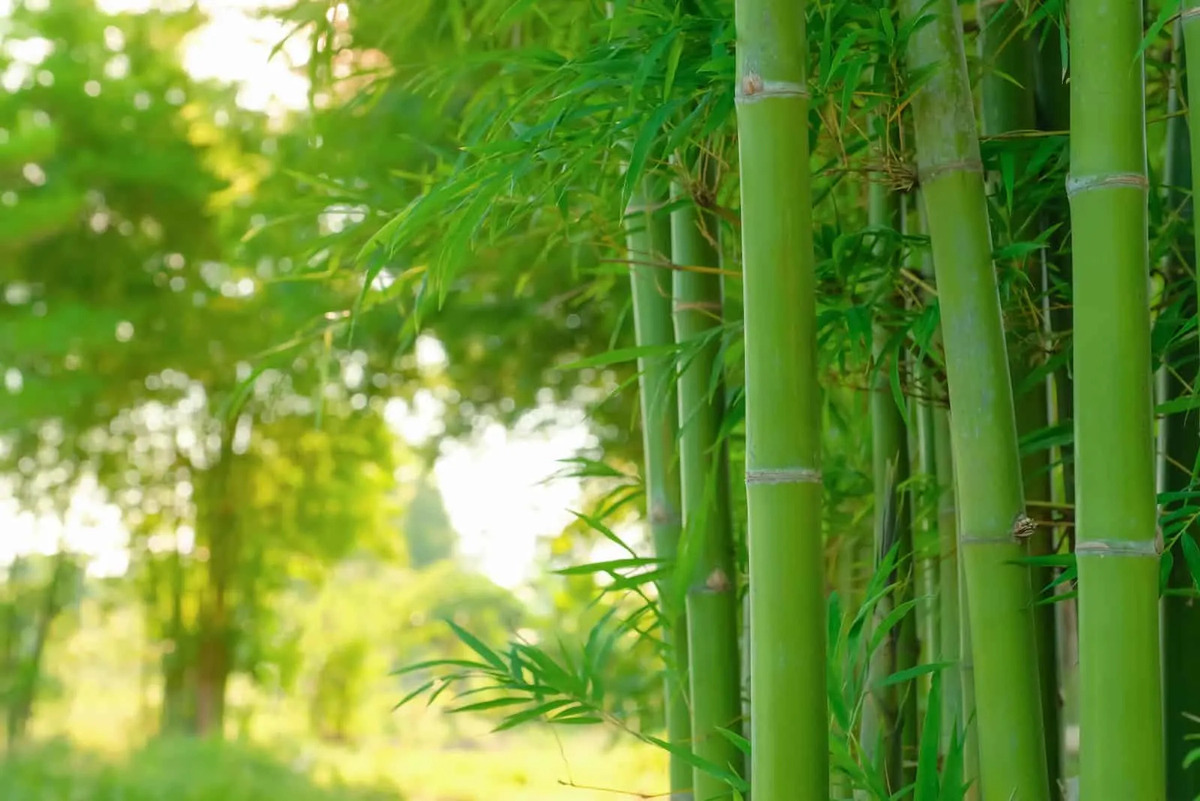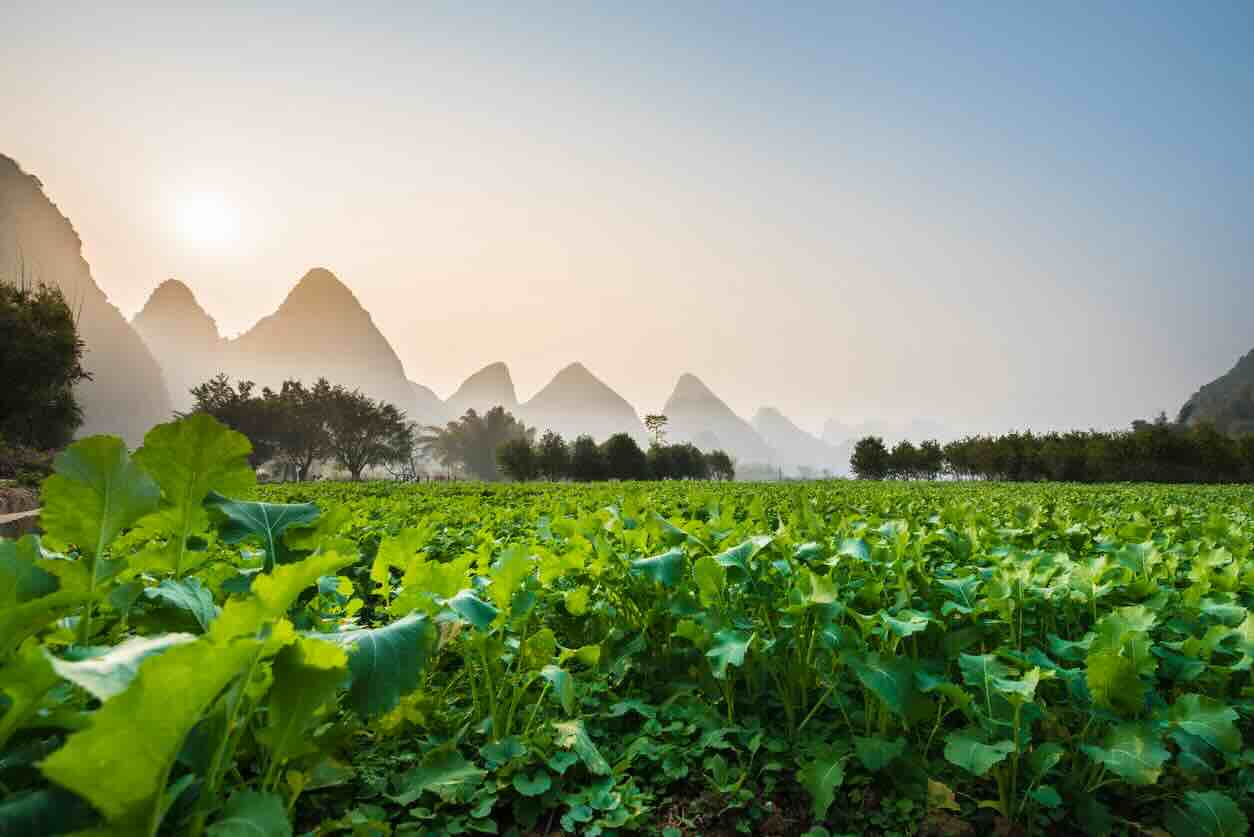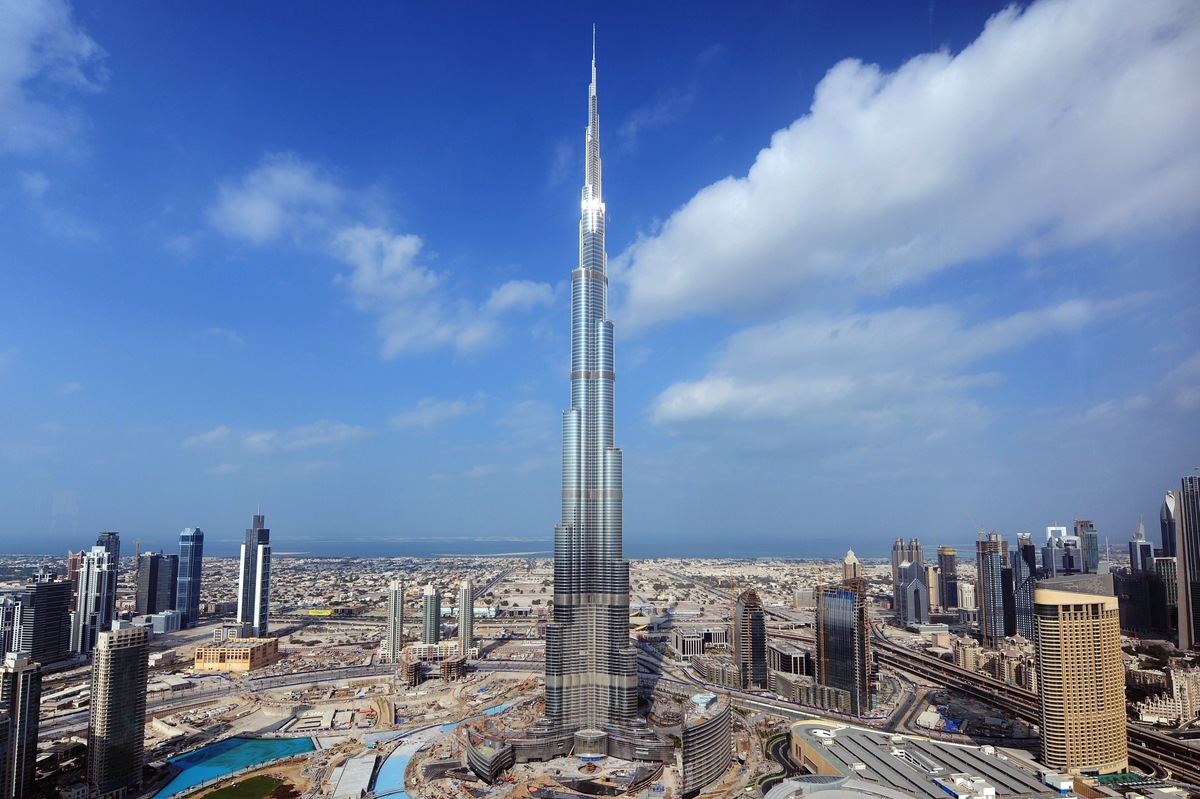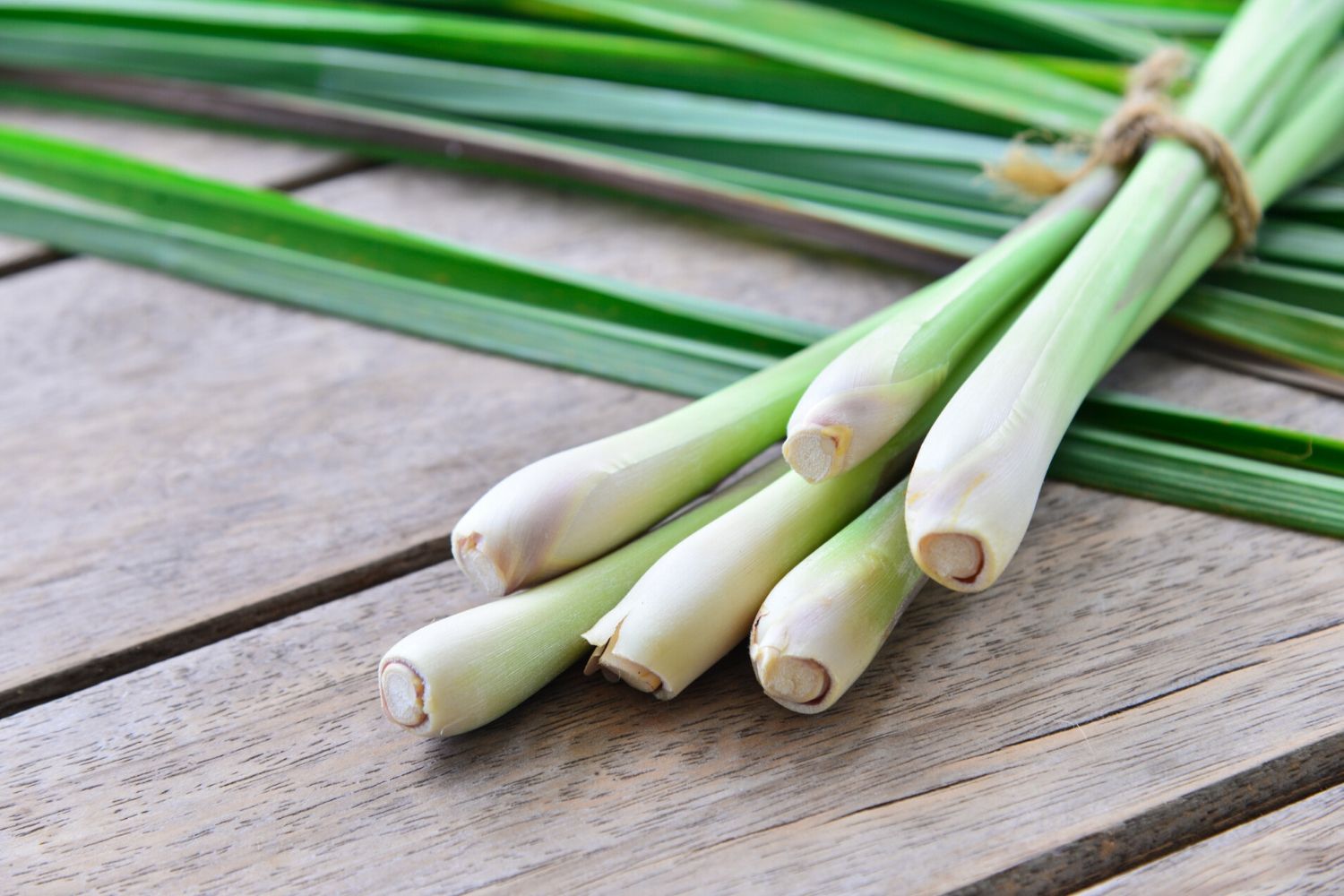Home>Gardening & Outdoor>Landscaping Ideas>What Is The Tallest Grass On Earth


Landscaping Ideas
What Is The Tallest Grass On Earth
Published: January 27, 2024
Discover the tallest grass on earth and get landscaping ideas to incorporate it into your outdoor space. Learn how to enhance your landscape with this unique and impressive plant.
(Many of the links in this article redirect to a specific reviewed product. Your purchase of these products through affiliate links helps to generate commission for Storables.com, at no extra cost. Learn more)
Introduction
When it comes to the world of grasses, there’s one particular species that stands head and shoulders above the rest – quite literally. The tallest grass on Earth, known for its impressive height and myriad of uses, is a botanical marvel that has captivated the attention of scientists, environmentalists, and nature enthusiasts alike. In this article, we’ll delve into the fascinating world of the tallest grass, exploring its unique characteristics, habitat, ecological importance, and the challenges it faces in the modern world.
From its towering stature to its vital role in various ecosystems, the tallest grass holds a special place in the natural world. Join us as we unravel the wonders of this remarkable plant and gain a deeper understanding of its significance in the intricate web of life on our planet.
Key Takeaways:
- The giant bamboo, the tallest grass on Earth, is a symbol of resilience and vitality, playing a crucial role in sustaining ecosystems and inspiring sustainable solutions for modern challenges.
- Despite facing threats like habitat loss and overexploitation, concerted conservation efforts can safeguard the future of the giant bamboo, ensuring its continued ecological contributions for generations to come.
Characteristics of the Tallest Grass
The tallest grass on Earth, scientifically known as Bambusa balcooa or commonly referred to as the giant bamboo, is a botanical marvel renowned for its exceptional height and remarkable properties. This towering grass species can reach astonishing heights of up to 30 meters (98 feet), making it one of the most impressive members of the grass family. The stems, or culms, of the giant bamboo are characterized by their robust and sturdy nature, providing a solid foundation for the towering plant. The culms are adorned with distinctive nodes and internodes, lending a unique and aesthetically pleasing appearance to the plant.
One of the most remarkable features of the giant bamboo is its rapid growth rate. In optimal conditions, this majestic grass can grow several feet in a single day, making it a symbol of resilience and vitality in the natural world. The leaves of the giant bamboo are long and slender, adding to the plant’s graceful and elegant demeanor. These leaves play a crucial role in the photosynthetic process, harnessing the power of sunlight to fuel the plant’s growth and sustenance.
Moreover, the giant bamboo exhibits exceptional strength and flexibility, making it an invaluable resource for various practical and cultural purposes. Its sturdy culms and fibrous composition contribute to its resilience, while its flexibility allows it to sway gracefully in the wind, withstanding the forces of nature with remarkable fortitude.
Furthermore, the giant bamboo is renowned for its remarkable reproductive strategy. This species produces intricate and delicate flowers, known as inflorescences, during its flowering cycle. The flowering of the giant bamboo is a rare and extraordinary event, occurring at intervals of several decades. This unique phenomenon adds an air of mystique and wonder to the already captivating nature of the tallest grass on Earth.
With its towering height, rapid growth, sturdy culms, graceful leaves, and extraordinary reproductive cycle, the giant bamboo stands as a testament to the awe-inspiring diversity and resilience of the plant kingdom.
Habitat and Distribution
The habitat and distribution of the tallest grass on Earth, the giant bamboo (Bambusa balcooa), are as diverse and remarkable as the plant itself. This majestic grass species thrives in a variety of environments, ranging from lush tropical forests to subtropical regions characterized by moderate temperatures and ample rainfall. The giant bamboo is native to the Indian subcontinent, where it can be found in abundance across regions such as Assam, West Bengal, and the Eastern Himalayas.
One of the defining features of the giant bamboo’s habitat is its affinity for moist and well-drained soil, providing the essential nutrients and support necessary for the plant’s rapid growth and development. The plant’s natural habitat often includes areas near rivers, streams, and other water bodies, where the soil remains consistently moist, fostering the ideal conditions for the giant bamboo to thrive.
Furthermore, the distribution of the giant bamboo extends beyond its native regions, with cultivation and propagation efforts leading to its presence in various parts of the world. This remarkable grass species has found a home in diverse ecosystems, from tropical and subtropical regions to temperate climates where it has been introduced as a valuable resource and a symbol of natural beauty.
Moreover, the giant bamboo’s adaptability and resilience have made it a cherished component of gardens, parks, and landscapes in many countries, where its towering presence adds a touch of grandeur and serenity to the surroundings. Its widespread distribution is a testament to the universal appeal and significance of this extraordinary grass species, transcending geographical boundaries and cultural differences.
As a symbol of vitality and natural splendor, the giant bamboo continues to enchant and inspire people across the globe, thriving in diverse habitats and captivating the hearts and minds of all who encounter its majestic presence.
The tallest grass on Earth is the bamboo plant, which can grow up to 100 feet tall. Bamboo is a type of grass and is known for its rapid growth and strength.
Importance of the Tallest Grass
The tallest grass on Earth, the giant bamboo (Bambusa balcooa), holds profound ecological, cultural, and practical significance, making it a truly indispensable component of the natural world and human society. From its vital role in sustaining diverse ecosystems to its myriad of practical applications, the giant bamboo stands as a symbol of resilience, sustainability, and the harmonious coexistence of humanity and nature.
Ecologically, the giant bamboo plays a crucial role in mitigating climate change and preserving biodiversity. As a prolific carbon sink, this towering grass species efficiently sequesters carbon dioxide from the atmosphere, helping to reduce greenhouse gas levels and combat global warming. Its extensive root system stabilizes soil, prevents erosion, and contributes to watershed protection, safeguarding the delicate balance of natural ecosystems.
Furthermore, the giant bamboo serves as a sanctuary and vital habitat for a diverse array of wildlife, providing food, shelter, and nesting sites for numerous species. Its presence in forested areas enriches the ecological tapestry, fostering a thriving ecosystem teeming with life and vitality.
Culturally, the giant bamboo holds deep-rooted significance in various societies, where it is revered as a symbol of strength, resilience, and prosperity. Its versatile applications in traditional crafts, construction, and culinary practices have enriched cultural heritage and traditions for generations, embodying the enduring bond between humanity and the natural world.
Practically, the giant bamboo offers a myriad of sustainable and eco-friendly solutions for modern challenges. Its rapid growth and renewable nature make it an invaluable resource for sustainable construction, providing a durable and versatile material for housing, furniture, and infrastructure. Additionally, the giant bamboo’s fibrous composition lends itself to diverse applications, including papermaking, textile production, and culinary uses, offering sustainable alternatives to conventional materials and promoting a greener, more sustainable future.
With its multifaceted importance encompassing ecological resilience, cultural significance, and practical utility, the giant bamboo stands as a beacon of hope and inspiration, embodying the profound interconnectedness of humanity and the natural world.
Threats and Conservation
Despite its remarkable resilience and ecological importance, the tallest grass on Earth, the giant bamboo (Bambusa balcooa), faces a range of threats that jeopardize its continued existence in the wild. Habitat loss, primarily due to deforestation, agricultural expansion, and urban development, poses a significant threat to the natural habitats of the giant bamboo. The conversion of forested areas for human activities diminishes the available space for the giant bamboo to thrive, leading to a decline in its populations and the fragmentation of its habitats.
Furthermore, unsustainable harvesting and overexploitation of the giant bamboo for commercial purposes, such as timber and pulp production, pose a significant threat to its long-term survival. Without proper management and conservation measures, the relentless extraction of this valuable resource can deplete natural populations, disrupting ecosystems and diminishing the plant’s ecological contributions.
In addition, climate change and its associated impacts, such as extreme weather events and shifting precipitation patterns, pose a formidable challenge to the giant bamboo’s resilience and adaptability. These environmental changes can disrupt the delicate balance of its habitats, affecting growth patterns, reproductive cycles, and overall ecological stability.
To address these pressing challenges and safeguard the future of the giant bamboo, concerted conservation efforts are essential. The establishment of protected areas, nature reserves, and wildlife sanctuaries plays a pivotal role in preserving the natural habitats of the giant bamboo, providing safe havens where this remarkable grass species can thrive and fulfill its ecological role.
Moreover, sustainable land management practices, reforestation initiatives, and agroforestry programs can contribute to the restoration and conservation of the giant bamboo’s habitats, promoting the sustainable coexistence of human activities and natural ecosystems. By integrating the cultivation of the giant bamboo into sustainable land use practices, communities can harness its ecological benefits while ensuring the preservation of its natural populations.
Educational outreach and community engagement initiatives are also vital in raising awareness about the importance of the giant bamboo and fostering a sense of stewardship among local communities. By empowering individuals and communities to participate in conservation efforts, a collective commitment to preserving the giant bamboo and its habitats can be cultivated, ensuring a brighter and sustainable future for this extraordinary grass species.
Through proactive conservation measures, collaborative partnerships, and a shared commitment to sustainability, the giant bamboo can continue to thrive and inspire future generations, enriching the tapestry of life on our planet.
Read more: What Is The Tallest Ornamental Grass
Conclusion
The tallest grass on Earth, the giant bamboo (Bambusa balcooa), is a botanical marvel that embodies the awe-inspiring diversity and resilience of the natural world. From its towering stature to its vital ecological contributions and multifaceted cultural significance, the giant bamboo stands as a testament to the profound interconnectedness of humanity and the environment.
As a towering symbol of vitality and natural splendor, the giant bamboo holds a special place in the intricate web of life, playing a crucial role in sustaining diverse ecosystems, mitigating climate change, and enriching cultural heritage. Its remarkable properties, including rapid growth, sturdy culms, and versatile applications, make it an invaluable resource for sustainable solutions and a source of inspiration for innovative practices.
However, the giant bamboo faces a range of threats, including habitat loss, overexploitation, and the impacts of climate change, which underscore the urgent need for conservation and sustainable management. Through concerted conservation efforts, including the establishment of protected areas, sustainable land management practices, and community engagement, the future of the giant bamboo can be safeguarded, ensuring its continued presence and ecological contributions for generations to come.
As we navigate the complexities of a rapidly changing world, the giant bamboo serves as a poignant reminder of the resilience and interconnectedness of all life forms. Its towering presence and enduring significance inspire a shared commitment to conservation, sustainability, and the harmonious coexistence of humanity and nature.
In the grand tapestry of life, the giant bamboo stands as a towering testament to the enduring power of nature, inviting us to cherish and protect the remarkable diversity that enriches our world.
Frequently Asked Questions about What Is The Tallest Grass On Earth
Was this page helpful?
At Storables.com, we guarantee accurate and reliable information. Our content, validated by Expert Board Contributors, is crafted following stringent Editorial Policies. We're committed to providing you with well-researched, expert-backed insights for all your informational needs.















0 thoughts on “What Is The Tallest Grass On Earth”